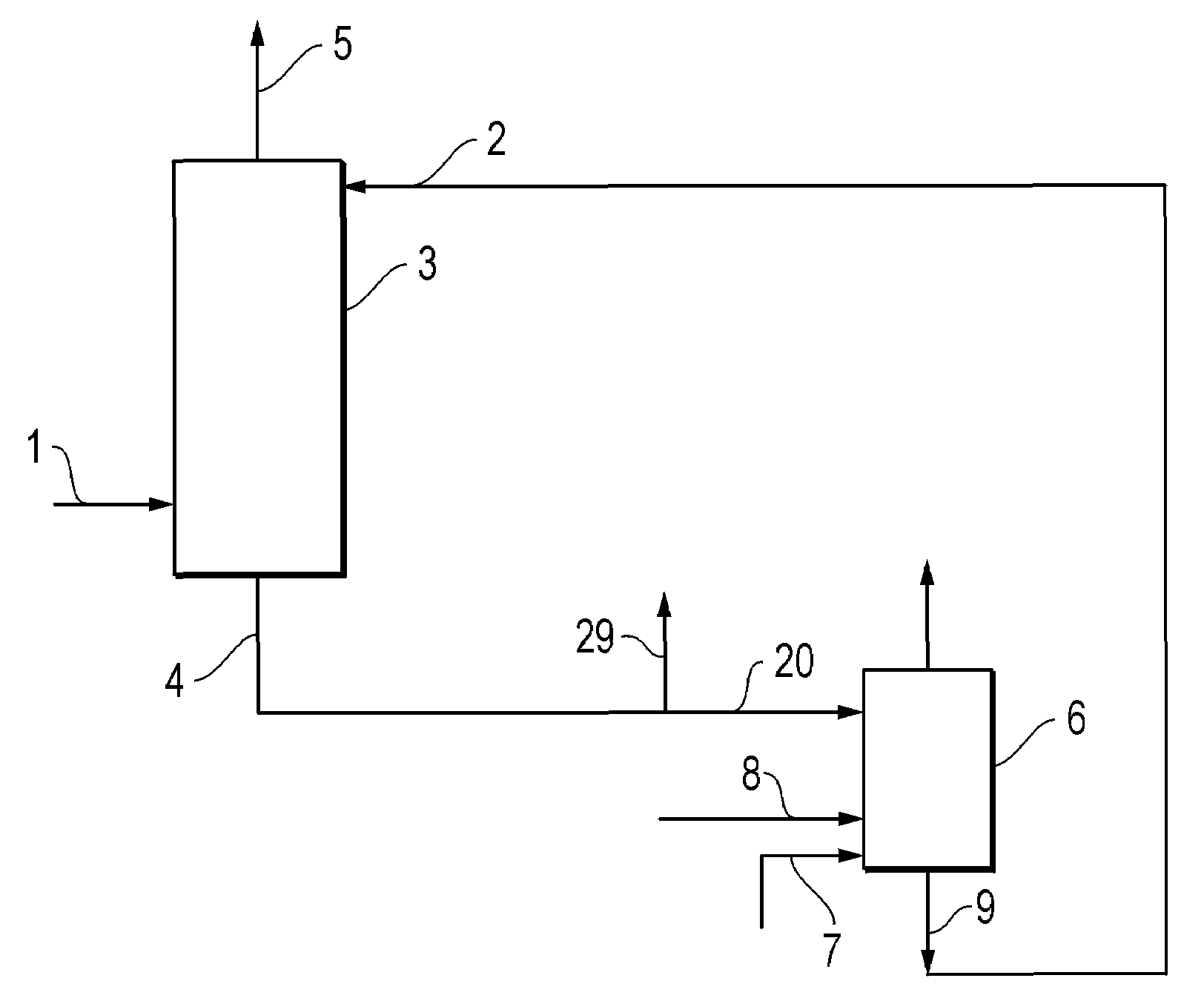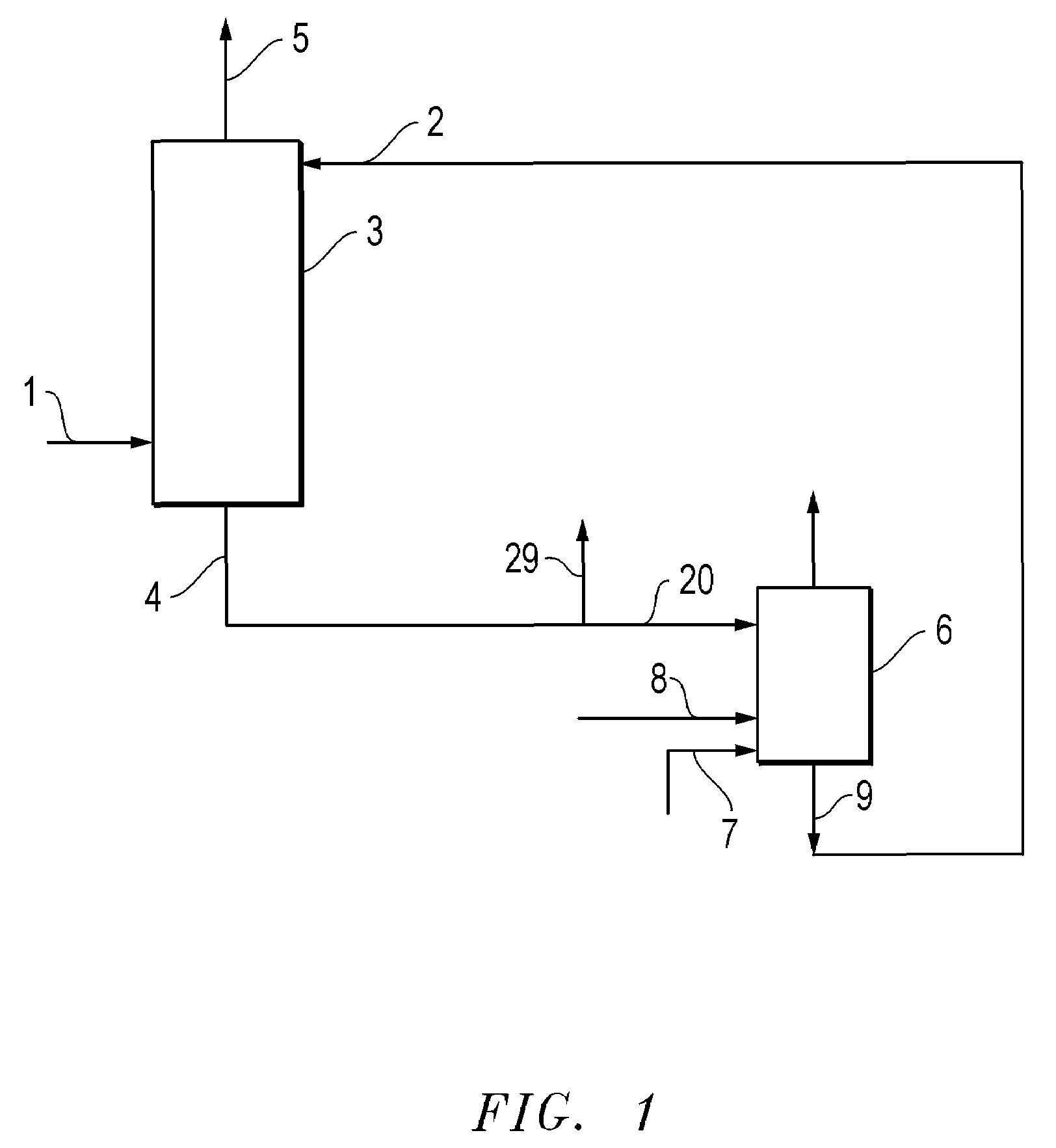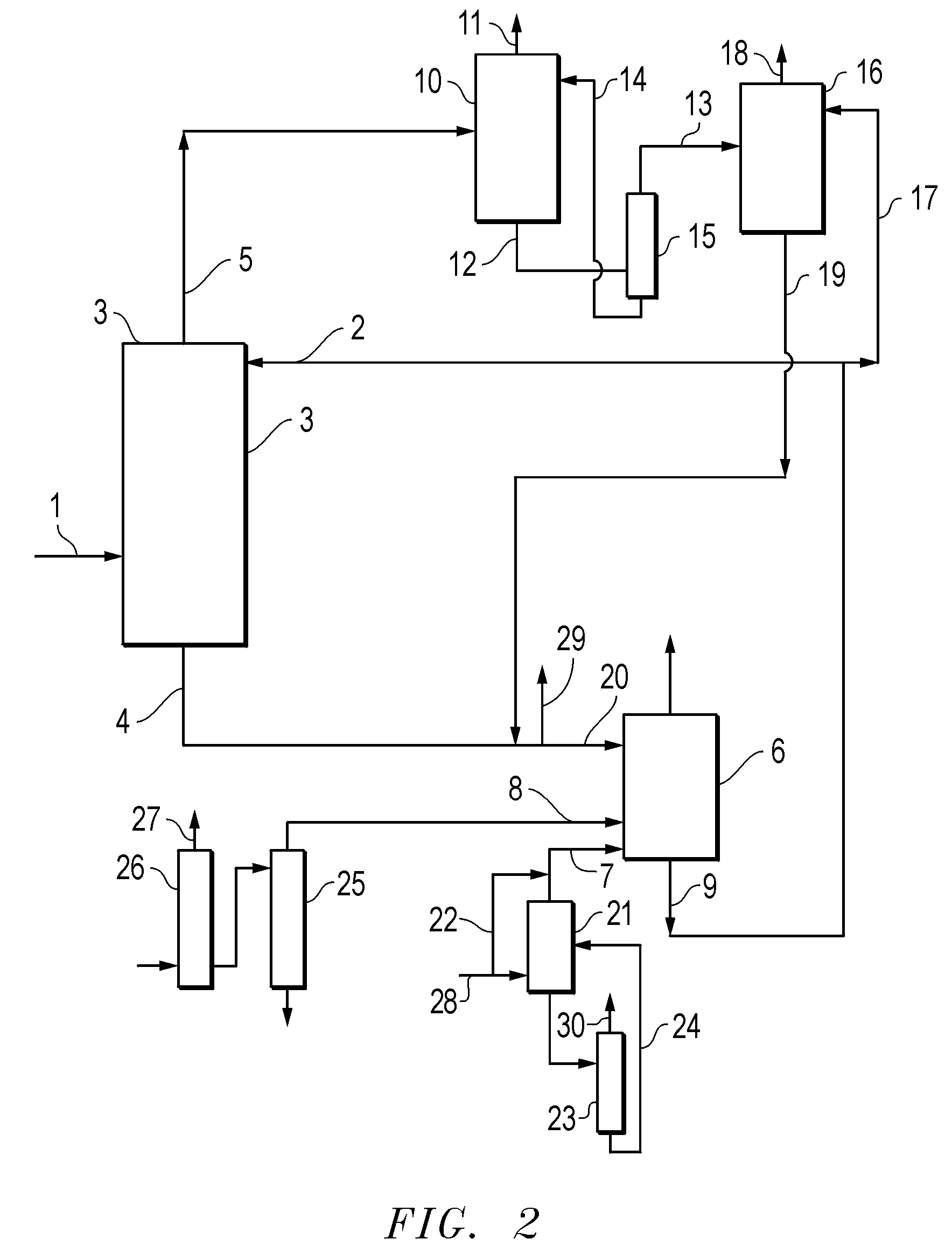Process for treating a gas stream
a gas stream and gas treatment technology, applied in the field of gas stream treatment, can solve the problems of increasing the cost of removing hydrogen sulfide from a mixture including carbon dioxide, poisonous hydrogen sulfide, and increasing so as to reduce the cost of removing hydrogen sulfide, and offset the process cost
- Summary
- Abstract
- Description
- Claims
- Application Information
AI Technical Summary
Benefits of technology
Problems solved by technology
Method used
Image
Examples
first embodiment
[0014]Referring now to FIG. 1, the process for removing sulfur-containing compounds from a gas comprising hydrogen sulfide and carbon dioxide is shown. This embodiment comprises contacting a first gas 1 with a scrub solution 2 in a first contact zone 3. For the purposes of this invention the term contact zone includes any combination of towers, columns, trays, vessels, pumps, valves, control systems, and any other equipment known in the art useful in facilitating the contact of a liquid and a gas. The first gas 1 comprises hydrogen sulfide and carbon dioxide. The first gas 1 may also comprise various hydrocarbons. The scrub solution 2 is aqueous and comprises ammonium bisulfite and ammonium sulfite. It should be readily understandable to persons skilled in the art that ammonium sulfite and ammonium bisulfite are present in ionic form in the scrub solution. Optionally, the scrub solution 2 may be produced by contacting ammonia and sulfur dioxide with an aqueous solution in a second c...
second embodiment
[0017]The second embodiment further comprises contacting a second gas 7, comprising sulfur dioxide, with a third gas 8, comprising ammonia, and a feed liquid, comprising at least a portion of the first contact zone effluent 4, in a second contact zone 6. This yields ammonium bisulfite and ammonium sulfite. The second contact zone 6 produces a second contact zone effluent liquid 9 comprising the ammonium bisulfite and ammonium sulfite. The second contact zone effluent liquid 9 can further comprise ammonium thiosulfate. At least a portion of the second contact zone effluent 9 is fed to the first contact zone 3 as the scrub solution 2.
[0018]Stoichiometrically, for each molecule of hydrogen sulfide converted to ammonium thoisulfate in the first contact zone 3, two molecules of sulfur dioxide must be converted to ammonium sulfite and ammonium bisulfite in the second contact zone 6. The amount of ammonium sulfite and ammonium bisulfite in the feed liquid 20 added to the second contact zon...
PUM
| Property | Measurement | Unit |
|---|---|---|
| pH | aaaaa | aaaaa |
| concentration | aaaaa | aaaaa |
| heat | aaaaa | aaaaa |
Abstract
Description
Claims
Application Information
 Login to View More
Login to View More - R&D
- Intellectual Property
- Life Sciences
- Materials
- Tech Scout
- Unparalleled Data Quality
- Higher Quality Content
- 60% Fewer Hallucinations
Browse by: Latest US Patents, China's latest patents, Technical Efficacy Thesaurus, Application Domain, Technology Topic, Popular Technical Reports.
© 2025 PatSnap. All rights reserved.Legal|Privacy policy|Modern Slavery Act Transparency Statement|Sitemap|About US| Contact US: help@patsnap.com



